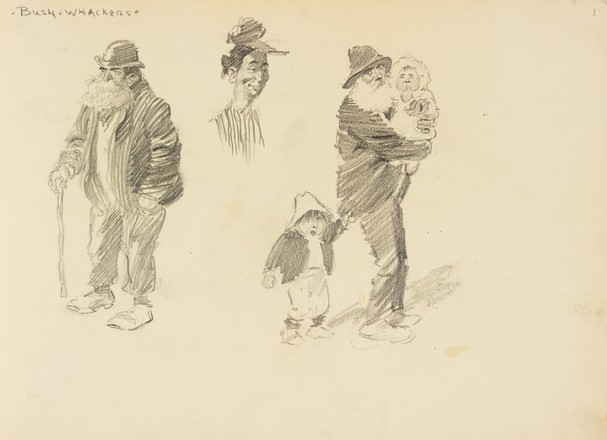Norman was the fifth in a
family of ten children. Five became artists and writers: Percy, Lionel, Norman,
Ruby and Daryl.
Following in the footsteps
of his older brothers, Percy and Lionel, Norman became editor of the school
magazine, Boomerang, which was a
proving ground for his later work for periodicals such as the Hawklet in Melbourne, where he began
work with his brother Lionel in 1895. While employed there as a cartoonist, Norman
attended the life drawing classes at the National Gallery. He and Lionel led a bohemian
life in various rented rooms in Melbourne, visiting the theatres, music halls,
prize fights and the law courts in search of inspiration for their drawing work.
At the turn of the century
Norman moved to Sydney to take up a position as a staff artist at the Bulletin. At the same time, he acquired
a studio in Rowe Street and began drawing live models. His male models included
William Henry Shaw, who posed for Lindsay for five years from 1901 to 1905. Shaw
had once worked as a warder at the convict prison at Port Arthur. Another of Lindsay’s
notable models was Rose Soady; she was 16 when they met in 1901 and later
became his second wife and business manager.
Norman travelled to Europe
in October 1909, accompanying his sister Ruby and Will Dyson, who were recently
married. After travelling through Italy and France, they based themselves in
London, where Norman made various publishing contacts and was introduced to
many of London’s artists and writers. Rose joined Norman in March 1910, but his
health there was suffering: ‘he found the weather cruel and the people even
more straightlaced than Australians’.1 Returning to Australia in
January 1911, Norman fell ill with pleurisy. After being in hospital for three
months, he and Rose moved to the Blue Mountains, first to Leura and then to
Faulconbridge, which became their permanent home.
Throughout the 1920s Norman
worked as a writer and artist, producing short stories and novels, pen
drawings, prints and watercolours. His work was exhibited regularly in the
annual exhibitions of the Society of Artists and other exhibitions.
He returned to Sydney from
his Blue Mountains idyll in 1934, renting a studio at 12 Bridge Street. He
remained based in this studio throughout the 1930s, returning to Faulconbridge in
1940. Norman lived and worked in this space, which became a meeting place for
Sydney artists and writers. Here he began to paint regularly in oils for the
first time, working continuously from life models. Lindsay’s nudes, however,
did provoke controversy:
‘Everything I did was
“indecent”. I was "a monstrous fellow". I was out to "violate
all popular morality and everything else". I wasn't doing anything of the
sort. I cared for nothing but to express myself.’2
Footnotes
1. Lin Bloomfield, Norman Lindsay: Impulse to Draw, 1984, p 66
2. Archival footage of Norman Lindsay aired on George Negus Tonight: History, ABC TV, 26 May 2003, http://www.abc.net.au/dimensions/dimensions_in_time/Transcripts/s865289.htm



 Back to list
Back to list